Harley Quinn is a fictional character created by Paul Dini and Bruce Timm, debuting in Batman: The Animated Series as the Joker's henchwoman and love interest. Originally intended for a single appearance, she became a recurring character in the DC Animated Universe before being integrated into DC Comics' canon. Her origin story depicts her as a former psychologist at Arkham Asylum who was manipulated by the Joker, leading her to become his accomplice and lover. The name Harley Quinn is a play on the Harlequin character.
1991: Inspiration for Harley Quinn's Character
In 1991, Paul Dini witnessed Arleen Sorkin playing a jester in an episode of Days of Our Lives, which inspired him to base Harley Quinn on her, incorporating aspects such as her mannerisms and personality.
September 11, 1992: Harley Quinn's Debut in "Joker's Favor"
On September 11, 1992, Harley Quinn, created by Paul Dini and Bruce Timm, made her debut in the 22nd episode of Batman: The Animated Series, "Joker's Favor", as a henchwoman for the Joker.
1992: Harley Quinn's Debut in Batman: The Animated Series
In 1992, Harley Quinn made her first appearance in Batman: The Animated Series, voiced by Arleen Sorkin.
1992: Creation of Harley Quinn
In 1992, Harley Quinn was created by Paul Dini and Bruce Timm for the Batman: The Animated Series episode "Joker's Favor".
September 1993: Comic Book Debut in The Batman Adventures
In September 1993, Harley Quinn made her comic book debut in the 12th issue of The Batman Adventures, a series set in the universe of The Animated Series, and became a regular character.
1993: Harley and Ivy First Introduced in Batman: The Animated Series
In 1993, Poison Ivy was first introduced as a new friend to Harley in the Batman: The Animated Series episode "Harley and Ivy" as Dini wanted to make Harley a stronger character and write a story where she leaves the Joker.
1993: Harley and Ivy episode released
In 1993, the Harley and Ivy episode explored her friendship with Poison Ivy.
February 1994: Video Game Debut
In February 1994, Harley Quinn made her first appearance in a video game in The Adventures of Batman and Robin, an action platformer based on Batman: The Animated Series.
February 1994: Release of The Batman Adventures: Mad Love
In February 1994, The Batman Adventures: Mad Love one-shot was released, recounting Harley's origin story. Written by Dini and drawn by Timm, it marked their first comic book collaboration.
1995: Harley Quinn in Batman: The Animated Series
In 1995, Harley Quinn voiced by Arleen Sorkin reprised her role in Batman: The Animated Series.
1996: Harley Quinn in Superman: The Animated Series
In 1996, Harley Quinn voiced by Arleen Sorkin reprised her role in Superman: The Animated Series.
1997: Appearance in Batman: Thrillkiller
In 1997, Harley Quinn appeared as Hayley Fitzpatrick in the story Batman: Thrillkiller, released under Elseworlds, a DC Comics imprint.
1997: Harley Quinn in The New Batman Adventures
In 1997, Harley Quinn voiced by Arleen Sorkin reprised her role in The New Batman Adventures.
October 1999: Harley Quinn Enters DC Comics Canon
In October 1999, Harley Quinn was adapted into DC Comics' canon with the release of the one-shot Batman: Harley Quinn #1, seven years after her debut in Batman: The Animated Series.
1999: Harley Quinn's Superhuman Abilities Established
Following her transition to the main DC canon in 1999, Harley Quinn was established as having immunity to toxins and enhanced strength, agility, durability, and reflexes, which she received after having been injected with a serum concocted by Poison Ivy.
1999: Canonical Character with Batman: Harley Quinn
In 1999, Harley Quinn became a canonical character with the release of Batman: Harley Quinn.
1999: Harley Quinn in The New Batman Adventures
In 1999, Harley Quinn voiced by Arleen Sorkin reprised her role in The New Batman Adventures.
1999: Adaptation into Mainstream DC Universe
In 1999, Harley Quinn was adapted into the mainstream DC Universe with the one-shot graphic novel Batman: Harley Quinn, which put her origin in the middle of the Batman: No Man's Land story line.
1999: Harley Quinn's Introduction to Comics
In 1999, Harley Quinn was depicted as the former doctor turned sidekick and lover of the Joker, as well as the criminal associate and best friend of Poison Ivy, following her introduction to the comics.
1999: Mad Love Adapted into Animated Episode
In 1999, the comic book Mad Love was adapted into an episode of the same name in The New Batman Adventures.
1999: The Joker Plans to Kill Harley Quinn
In the 1999 one-shot comic Batman: Harley Quinn, the Joker decides to kill Harley, after admitting that he does care for her, that their relationship is romantic, and that these feelings prevent him from fulfilling his purpose.
December 2000: Publication of First Ongoing Series
In December 2000, Karl Kesel's run on Harley Quinn's first ongoing series began being published, focusing on Harley leaving the Joker and becoming a solo criminal.
2000: Harley Quinn in Batman Beyond: Return of the Joker and Static Shock
In 2000, Harley Quinn, voiced by Arleen Sorkin, reprised her role in Batman Beyond: Return of the Joker and Static Shock.
2001: Harley Quinn in Justice League
In 2001, Harley Quinn, voiced by Arleen Sorkin, reprised her role in Justice League.
December 2002: End of Kesel's Run on Harley Quinn
In December 2002, due to underwhelming sales, Karl Kesel's 25-issue run on the Harley Quinn series ended, and DC decided to change the creative team.
2003: Cancellation of Harley Quinn Series
In 2003, the Harley Quinn series was cancelled due to lackluster sales, despite a change in creative direction.
2004: Harley Quinn in Static Shock and Justice League
In 2004, Harley Quinn, voiced by Arleen Sorkin, reprised her role in Static Shock and Justice League.
July 2009: Resurfacing in Gotham City Sirens
In July 2009, Harley Quinn resurfaced in a leading role in Gotham City Sirens, a team-up title created by Dini that brought together Harley Quinn, Catwoman, and Poison Ivy.
2009: Return in Gotham City Sirens
In 2009, Harley Quinn returned in a leading role with the Gotham City Sirens series, forming an unstable alliance with Poison Ivy and Catwoman.
2009: Harley Quinn Ranked #45 in IGN's Top 100 Comic Book Villains
In 2009, IGN ranked Harley Quinn as #45 on their list of the Top 100 Comic Book Villains of All Time.
August 2011: Cancellation of Gotham City Sirens
In August 2011, Gotham City Sirens was cancelled for The New 52, DC Comics' relaunch of their entire comic line.
September 2011: Reintroduction in Suicide Squad
In September 2011, as part of the New 52 reboot, Harley Quinn was reintroduced by Adam Glass as a member of Task Force X in the relaunched Suicide Squad series, with a redesigned appearance inspired by the Batman: Arkham games.
2011: Harley Quinn Ranked 16th in Comics Buyer's Guide's 100 Sexiest Women in Comics
In 2011, Harley Quinn was ranked 16th in Comics Buyer's Guide's "100 Sexiest Women in Comics" list.
2011: Modernization in "The New 52"
In 2011, Harley Quinn's design was modernized for DC's "The New 52" line-wide relaunch, and she began regularly featuring as an antihero in the Suicide Squad and Birds of Prey team books.
September 2013: DC Comics' Harley Quinn Art Contest Controversy
In September 2013, DC Comics announced a "Break into comics with Harley Quinn!" art contest featuring controversial suicide scenarios for Harley Quinn, drawing criticism for its proximity to National Suicide Prevention Week and sexualized portrayal of suicide. After facing backlash from organizations like the American Foundation for Suicide Prevention, DC Comics apologized and revised the contest.
November 2013: Publication of New Harley Quinn Series
In November 2013, the new Harley Quinn series began being published, starting with Harley Quinn #0, which featured 17 comic book artists, including Bruce Timm, and detailed Harley's adventures in Coney Island.
April 2014: Cancellation of Suicide Squad
In April 2014, the Suicide Squad series was canceled to coincide with the conclusion of the "Forever Evil" storyline.
June 2016: DC Rebirth Relaunches Harley Quinn and Suicide Squad
In June 2016, the DC Rebirth event relaunched DC Comics' entire line of comic book titles. Harley Quinn as well as Suicide Squad were rebooted. Harley Quinn's DC Rebirth design included pink and blue dyed hair tips and a jacket inspired by Margot Robbie's portrayal of the character in the 2016 film Suicide Squad.
October 2016: Suicide Squad: Rebirth #1 Released
In October 2016, Suicide Squad was rebooted with the one-shot issue Suicide Squad: Rebirth #1 as part of the DC Rebirth event.
2016: Harley Quinn's Rising Popularity and Halloween Costume Trend
In 2016, Harley Quinn's comic relaunch outperformed other DC Rebirth titles, becoming a best-seller. Her Halloween costume ranked as the most popular in the US and UK, solidifying her position as a prominent and profitable female character, with DC Comics declaring February as Harley Quinn Month.
2016: Jen Brown Replaces Arleen Sorkin as Harley Quinn in DC Universe Online
In 2016, Jen Brown replaced Arleen Sorkin as the voice of Harley Quinn in the DC Universe Online game.
December 2017: Conner and Palmiotti end their run on Harley Quinn
In December 2017, after writing 64 issues, Conner and Palmiotti's five-year run on Harley Quinn's ongoing series concluded with the 34th issue, and writer Frank Tieri and artist Inaki Miranda took over the title.
2017: First Canonical Kiss between Harley Quinn and Poison Ivy
In 2017's Harley Quinn #25, Harley Quinn and Poison Ivy shared their first canonical kiss, confirming their non-monogamous relationship that was hinted at in the New 52 Harley Quinn series.
2017: Harley Loves Joker Backup Feature
In 2017, Paul Dini co-wrote Harley Loves Joker, a backup feature for Harley Quinn's Rebirth monthly series, which ran for 9 issues, brought back Harley's classic characterization, and focused on her past with the Joker.
July 2018: Sam Humphries Takes Over Harley Quinn Series
In July 2018, with issue #45, Sam Humphries became the new writer for the Harley Quinn series, and John Timms returned as the artist.
November 2018: Mad Love Novel Adaptation Released
In November 2018, the novel adaptation of Mad Love, written by Pat Cardigan and Paul Dini, was released as part of the DC Comic Novels series and published by Titan Books.
January 2019: Suicide Squad Series Cancellation
In January 2019, the Suicide Squad series, featuring Harley Quinn as a regular character and written by Rob Williams, was canceled.
2019: Kaley Cuoco Voices Harley Quinn in Animated Series
In 2019, Kaley Cuoco provided the character's voice in the animated series Harley Quinn.
August 2020: End of Harley Quinn's Ongoing Series
In August 2020, the Harley Quinn ongoing series came to an end.
2021: Harley Quinn as a Superheroine in Gotham City
For the 2021 Infinite Frontier relaunch, Harley Quinn moves back to Gotham City as a superheroine, aiding the Batman family with a new design by Riley Rossmo.
2021: Return to Gotham in Infinite Frontier
In 2021, DC's line-wide Infinite Frontier relaunch brought Harley Quinn back to Gotham City, reestablishing her as a superhero seeking redemption for her past actions.
January 2022: Harley Quinn Resumes Career as Psychologist
In January 2022, it was confirmed that Harley Quinn would be resuming her previous career as a psychologist.
2022: Harley Quinn YA Novel Series Launched by Penguin Random House
In 2022, Penguin Random House launched a Harley Quinn line of their young adult DC Icons series, authored by Rachael Allen.
Mentioned in this timeline
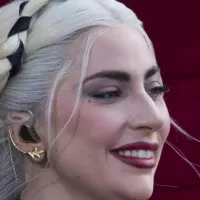
Lady Gaga born Stefani Joanne Angelina Germanotta is a highly...

Margot Robbie is a highly acclaimed Australian actress and producer...
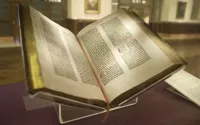
Books are a means of storing information as text or...
Poison is any chemical substance that can cause harm or...
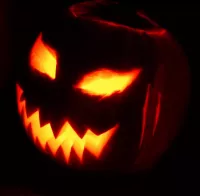
Halloween is an annual celebration on October st preceding All...
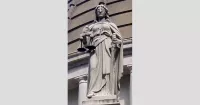
Justice in its broadest sense is the concept of treating...
Trending
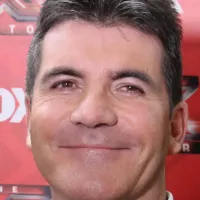
Simon Cowell is a prominent English television personality and businessman recognized for his role as a judge on various talent...
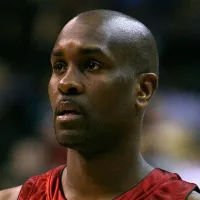
7 months ago Gary Payton Reflects on Jordan Matchup and Hypothetical Stats in Today's NBA
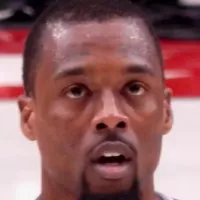
11 days ago Spurs Defeat Nuggets in Thrilling Game, Mavericks Face Nuggets
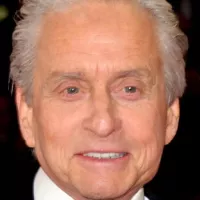
22 days ago Michael Douglas and Catherine Zeta-Jones Celebrate 25 Years of Marriage with Throwbacks
Luke Kornet is an American professional basketball player currently playing for the San Antonio Spurs in the NBA He's a...
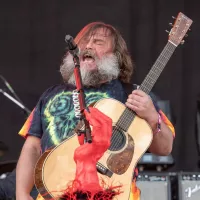
6 months ago Jack Black's Minecraft Movie Sets Premiere on HBO Max, June 20, 2025
Popular

Candace Owens is an American conservative political commentator and author...

Ilhan Omar is an American politician currently serving as the...

XXXTentacion born Jahseh Dwayne Ricardo Onfroy was a controversial yet...

Tom Cotton is an American politician and Army veteran currently...
The Kennedy Center Honors are annual awards recognizing individuals and...

Kelsey Grammer is an accomplished American actor producer and singer...